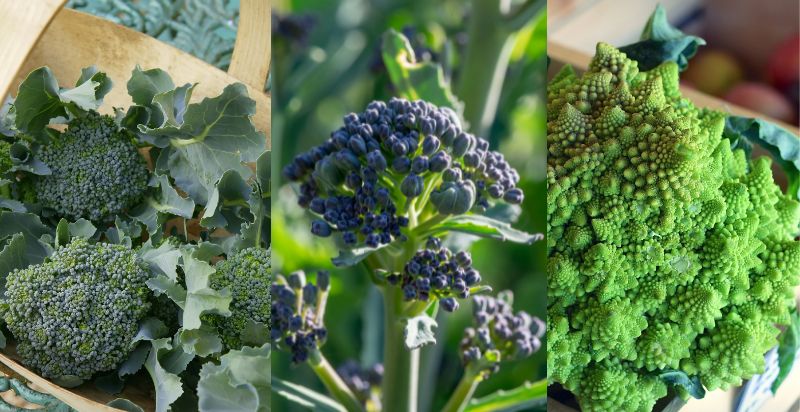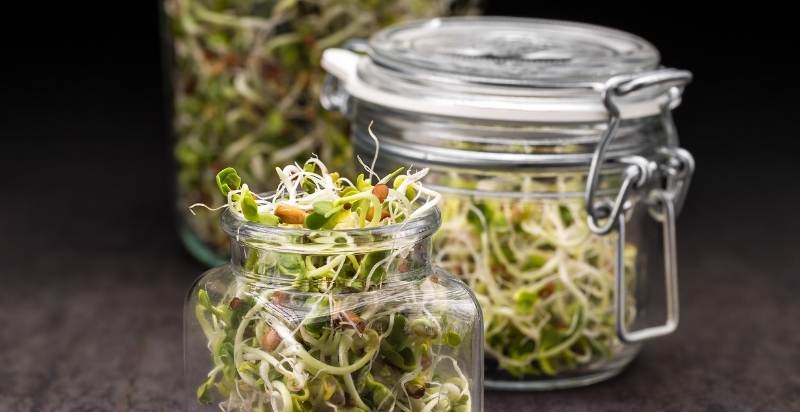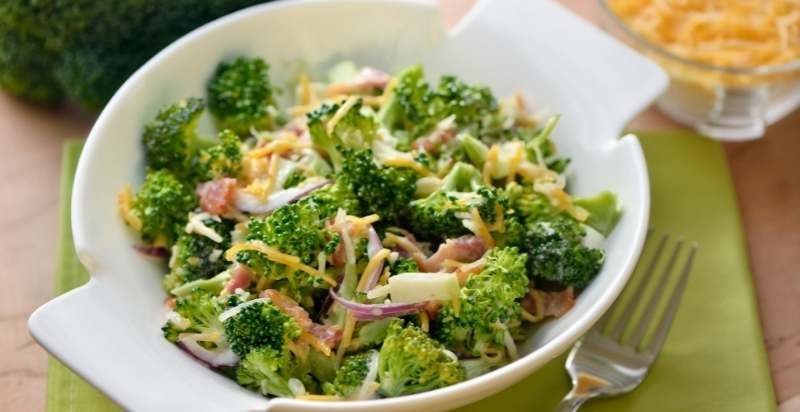It’s not just the leaves of broccoli plants that are edible. The small, sprout-like buds at the top of the stem are also tasty and nutritious. And, like the leaves, they can be eaten raw or cooked. But what should you do about flowers on broccoli sprouts? Are they edible? Do they taste good? Should you remove them before eating? Let’s take a closer look.
This article will examine the evidence behind the health claims about it. We will also discuss some simple ways to add broccoli sprouts to your diet. But first, let’s start with the basics :
What Is Broccoli?
Botanically classified as Brassica oleracea, broccoli is a member of the cabbage family, and it is an annual plant reproduced by seed. Broccoli is thought to have been domesticated in the Mediterranean region over 2,000 years ago. The word broccoli comes from the Italian plural of broccolo, which means ” the flowering crest of a cabbage,” and is the diminutive form of brocco, meaning “small nail” or “sprout.”
Broccoli contains many nutrients, including fiber, vitamin C, potassium, and magnesium. It also contains antioxidants that may protect against some chronic diseases. These are especially rich in nutrients and antioxidants.
The three main types of broccoli are:
- Calabrese broccoli: This is the most common type of broccoli, and it has large, green heads with tight buds.
- Sprouting broccoli: This type has smaller heads with more open flowers and tastes more intense than Calabrese broccoli.
- Romanesco broccoli: Romanesco broccoli has a chartreuse color and a flavor similar to cauliflower. Its buds form a natural spiral pattern.

Here’s everything you need to know about broccoli sprouts, including their nutritional content and potential health benefits.
What Are Broccoli Sprouts?
Broccoli sprouts are the immature flowering heads of Brassica oleracea, including cabbage, kale, and Brussels sprouts. The plant is native to the Mediterranean but is now grown in many countries worldwide.
The part of the plant we eat as broccoli sprouts is the Seed Germination Phase of the plant’s life cycle. Broccoli seeds will only sprout under certain conditions, including adequate moisture, air circulation, and temperature.
Once the seeds have germinated, they produce small seedlings that resemble miniature versions of adult broccoli plants. The seedlings are then harvested and eaten as broccoli sprouts.
For their purported health benefits, broccoli sprouts have a long history of use in traditional Chinese medicine. Recent scientific research has shown that broccoli sprouts contain high levels of active compounds called glucosinolates, and these compounds are thought to have cancer-preventive properties.
Health Benefits Of Broccoli Sprouts
Here are some health benefits of Broccoli sprouts mentioned below:
1. Cancer Prevention
The active compounds in broccoli sprouts, including glucosinolates and sulforaphane, have been shown to have cancer-preventive properties in animal studies.
2. Anti-Inflammatory Properties
Inflammation is a normal immune response to injury or infection. However, chronic inflammation can lead to the development of conditions like heart disease, arthritis, and cancer.
Some research has shown that broccoli sprouts’ active compounds may help reduce inflammation. In one study, sulforaphane was found to inhibit the production of inflammatory mediators in human cells.
3. Cardiovascular Protection
The broccoli sprouts’ anti-inflammatory properties may also help protect against cardiovascular disease. In one animal study, sulforaphane was found to reduce the risk of atherosclerosis (hardening of the arteries).
4. Neuroprotection
There is some evidence that the active compounds in broccoli sprouts may help to protect against neurodegenerative diseases. In one animal study, sulforaphane was found to reduce the symptoms of Huntington’s disease.
5. Detoxification
These contain a compound called glucoraphanin, which is converted into sulforaphane when the sprouts are eaten. Sulforaphane is thought to have detoxifying properties and may help to protect cells from damage caused by pollution and other environmental toxins.
While these are safe for most people to eat, some people may experience an allergic reaction to them. It’s also important to note that broccoli sprouts may contain harmful bacteria if not cooked properly. Therefore, it’s important to wash them thoroughly and cook them until they are steaming hot before eating.
Broccoli Sprouts Nutritional Content:
One ounce (28 grams) of broccoli sprouts contains the following nutrients (1):
- Calories: 8
- Protein: 1 gram
- Carbs: 1 gram
- Fiber: 1 gram
- Vitamin C: 24% of the Reference Daily Intake (RDI)
- Vitamin K: 36% of the RDI
- Folate: 5% of the RDI
- Pantothenic acid: 4% of the RDI
- Potassium: 3% of the RDI
- phosphorus: 2% of the RDI
How to Grow Broccoli Sprouts at Home?
Growing your broccoli sprouts at home is easy and only takes a few days, and all you need is some broccoli seeds, water, and patience.
Here’s a step-by-step guide to growing these at home:
- Soak the seeds: Place 1 tablespoon (15 grams) of broccoli seeds in a bowl and cover them with water. Let them soak overnight.
- Drain the seeds: The following day, drain the water from them and rinse them with fresh water.
- Place the seeds in a jar: Place a cheesecloth or coffee filter over the top of a mason jar, and secure it with a rubber band. Then, add the soaked seeds to the jar and cover them with 2–3 inches (5–7 cm) of filtered water.
- Let the seeds sprout: Place the jar in a dark place and let the seeds sprout for 3–4 days. Drain the water from the jar daily and rinse the seeds with fresh water.
- Harvest the sprouts: Once they have reached the desired length, remove them from the jar and rinse them with fresh water. They’re now ready to eat.
If you don’t have time to grow your broccoli sprouts, you can also find them pre-packaged at most health food stores.

What To Do If Your Broccoli Sprouts Have Flowers On Them
If you find that your broccoli sprouts have flowers on them, don’t worry! This is perfectly normal and nothing to be concerned about. Flowers are simply the plant’s way of producing seeds so that they can reproduce. Once the seeds have been produced, the plant will die back, and new sprouts will emerge from the ground the following spring.
If you want to harvest the seeds from your flowering broccoli sprouts:
- Wait until the flowers have turned brown and dried up.
- Carefully snip the flower heads and place them in a paper bag.
- Store the bag in a cool, dry place until spring, when you can sow the seeds outdoors.
Although it’s unnecessary to do anything if your have its flowers, you may want to trim off the flower heads if they are unsightly. If you do this, leave some of the stem attached so the plant can continue to produce seeds.
How To Store And Use Broccoli Sprouts?
To store them, first, wash them thoroughly in cool water. Next, please place them in a plastic bag or container with a lid and store them in the refrigerator. For best results, consume within 2-3 days of purchase. If you notice the sprouts starting to turn brown or wilt, discard them immediately.
When washing them, it is important to use cool water, as hot water can cause delicate leaves to wilt. Gently swish the sprouts in the water and then rinse with fresh water.
Once the sprouts are clean, please place them in a plastic bag or container with a lid and store them in the refrigerator. Be sure to consume within 2-3 days for best results. If you notice the sprouts starting to turn brown or wilt, discard them immediately.
There are many ways to incorporate broccoli sprouts into your diet. Here are a few ideas:
- Add them to salads
- Use them as a topping on sandwiches or burgers
- Mix them into soups or stews
- Sauté them with other vegetables
- Add them to smoothies or juices
Recipes That Include Broccoli Sprouts :
If you’re looking for ways to include broccoli sprouts in your diet, here are a few recipes to get you started:
- Broccoli Sprout and Avocado Salad
- Broccoli Sprout Stir-Fry
- Creamy Potato Soup with Broccoli Sprout
- Spicy Roasted Brussels Sprouts with Broccoli Sprout
- Juicy Turkey Burgers with Broccoli Sprouts
- Simple Egg Salad with Broccoli Sprout
- Chocolate and Peanut Butter Smoothie with Broccoli Sprouts

Allergies And Side Effects of Broccoli Sprouts:
It are generally safe for most people, but some may be allergic to them. If you experience adverse reactions after eating broccoli sprout, you should discontinue use and speak with a doctor.
Additionally, if you have a history of kidney stones, limiting your intake of foods high in oxalates is important. It contain high oxalates, which can contribute to the formation of kidney stones.
If you have kidney stones or are at risk for developing them, it’s best to speak with a doctor before adding broccoli sprout to your diet.
The Bottom Line
These are a type of sprout high in nutrients and antioxidants. They may offer several health benefits, including cancer prevention, detoxification support, and improved digestion.
Growing them at home are easy and only takes a few days. Once they’re ready, you can add them to salads, sandwiches, soups, stews, or smoothies. If you have kidney stones or are at risk for developing them, it’s best to speak with a doctor before adding them to your diet.
- Apricot Blossoms: Description, Flavor, Benefits, And Uses - April 23, 2024
- Everything you wanted to know about Green Tiger Tomatoes. - April 1, 2024
- Everything you wanted to know about Atomic Grape Tomatoes . - April 1, 2024
